
Dr. Lydia Frenzel: A Life Devoted to Excellence
By Adia Walker / Published April 2015
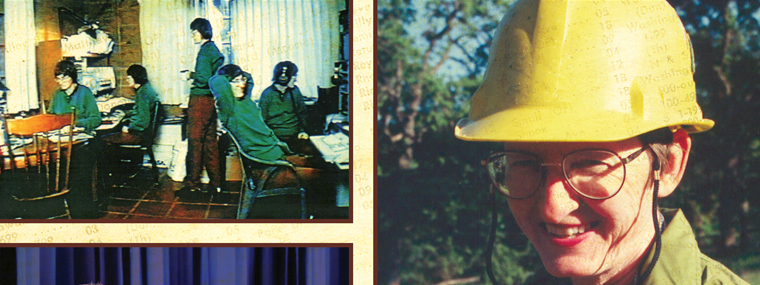
When the Society for Protective Coatings (SSPC) presented Dr. Lydia Frenzel with the John D. Keane award at the 2015 convention in Las Vegas, NV, the organization recognized not only an outstanding chemist and extraordinary woman for her contributions to the protective coatings industry, but also the importance of accepting waterjetting as a valuable solution to many of the industry’s issues.
“I was deeply satisfied and gratified to receive the award,” Frenzel says. “It means that my work has been accepted, and that I made a difference in a way that I never thought I would. This means that they are listening and thinking about what I’ve been saying, and that changes are being made. It’s not just an award for me, but for the industry as well.”
For several decades, Frenzel has been working to expand the use of waterjetting as a primary method for the removal of protective coatings. According to Frenzel, it is a slow process that involves changing an old way of thinking and getting people to understand all that is possible with waterjetting. “It really started in 1985, when I spoke with SSPC for the first time and introduced the concept of waterjetting,” Frenzel recalls. “I told them we had to get rid of the dust in the air and switch to something that didn’t produce piles of waste. Over the years, technology has improved, environmental regulations have tightened, and waterjetting has become an economical option.”
Frenzel’s husband and colleague, physicist Charles Frenzel, says the concept that his wife is presenting is just common sense. “When you waterblast a dam, you get a very clean dam and recyclable water,” he explains. “When you sandblast a dam, you get a dam that is cleaner than it was before, but you also get thousands of pounds of waste, and you have to pay for its disposal. Waterjetting doesn’t create an additional waste product—it just gives you the products you started with.”
Traveling the world along with his wife, Charles has been able to witness first-hand the impressions she has made, and the changes she has sparked. He has woven these accounts together in an autobiography that presents Lydia from what he calls, “the tag-along viewpoint.” Overhear-ing conversations about Frenzel’s waterjetting presentations from spectators in the audience, or even comments made in a restroom, has given Charles a unique perspective to share.
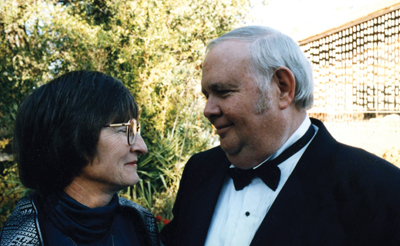
“Early on, Lydia came up with the idea of telling a story in order to convince people to change their minds,” says Charles. “A story is a clever tool—and a classic teaching philosophy. I would say that people who listen to Lydia’s lectures benefit most if they don’t sit down and take notes because what she says is intended to be thought provoking. The use of metaphor and telling a story is important; a way of becoming confident that what you’re doing is not only real but viable.”
Frenzel believes this method of presenting is much more interesting than simply rattling off facts and also allows people to come to their own conclusions, instead of being told what to believe. “When you go to a lecture and hear someone giving one piece of data after another, you begin to feel like falling asleep,” confesses Frenzel. “But if you tell a story, people will remember what you are saying.”
It is quite obvious that both Lydia and Charles love the art of storytelling—not only through live presentations, but through writing. They have published ten books, including novels and an autobiography. They still have a few unpublished books in their arsenal, as well as thousands of pages of scientific papers, blogs, and more.
Woven through these writings is the story of their lives together. When they first were married 42 years ago, they lived in separate states; he in Kentucky and she in Louisiana. Moving into a sailboat together, the couple went from one extreme to the other; once living very separately, they were now in constant, close quarters. For ten years, they lived and sailed together; learning to integrate into each other’s professional and personal lives was just one of the many experiences that brought them closer together.
Frenzel describes her husband as not only an artist, writer, and scientist, but also her soul mate. “Together, we share a closely-knit vision of life that merges creative and personal interests as one undivided whole,” she says. “By choice, my husband and I have no children. Our legacy is the women and men that we have known, nurtured, and challenged to be the best they can. Along our path, my path, my search for excellence within myself is a search for excellence in others.”
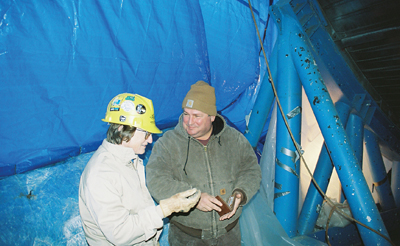
One of the ways Frenzel has promoted excellence throughout her life is through her work with Rotary International. “Charles and I believe in giving back to the community,” she says. Serving as one of the first 25 women District Governors, Frenzel forged lifelong connections while simultaneously helping to prove that women could be effective leaders. Charles notes that his wife has always had many admirable leadership qualities, one of which is the ability to be in the front of the room, sharing her ideas and inspiring people. Through both her professional career and her community service, Frenzel has been able to demonstrate this trait across the world.
Her leadership persona has led her around the globe, speaking at Rotary International Clubs and many other organizations, including the Australasian Corrosion Association (ACA), for which she was the plenary keynote opener in 2002. “It was amazing and gratifying to see the response,” says Frenzel. “I was to give a small, interactive workshop. The workshop was sold out before it was announced. People were sitting on top of the tables. It was that welcoming reception when I began to realize that I, with the Advisory Council sponsors, was making a difference.”
In 2006, Lydia and Charles returned from a trip to Australia to their home in Texas with plans to sell their properties and immigrate to the land Down Under. They already had a home picked out in Australia. But trouble selling their houses led to a delay and eventual cancellation of these plans, and the couple remained in Texas for several years.
“I found out I had breast cancer in 2011,” says Frenzel. “It was a traumatic experience, and it changed the way we looked at things. That summer, when I was going through chemo, it was 110 F in the shade for 60 days in the summer. That’s when we really knew that it was time for us to get out of Texas.” Underlying it all, Lydia and Charles recognized that their primary reason to live in Texas in order to take care of Charles’s aging family members was over; they were ready for a change and new challenges.
“We felt like we were drying up and blowing away in Texas,” recalls Charles. “We decided to move to Vancouver, WA, and never looked back. It’s never too hot in the summer and never too cold in the winter. We live near the Columbia River Gorge; we can look across at the mountains and see the snow, but we never have to deal with it. We are just a couple of old scientists growing old in each other’s company and enjoying it.”
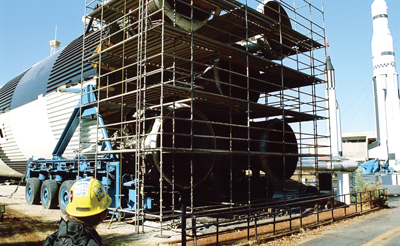
It was in this setting, sitting at her desk in her home office, that Frenzel discovered she had been unanimously selected by the SSPC Board of Governors to receive the organization’s high honor—the John D. Keane Award of Merit. The prestigious award acknowledges outstanding leadership and significant contributions to the development of the protective coatings industry and to SSPC; it is the organization’s stamp of authenticity.
Reviewing Frenzel’s life’s work, it is obvious that the honor is well deserved. With a doctorate in Chem-istry from the University of Texas, Frenzel pioneered marine research at the University of New Orleans through grants from the Office of Naval Research and the National Oceanic and Atmospheric Administration (NOAA) Sea Grant Program. She has co-chaired the SSPC/National Association of Corrosion Engineers (NACE) committees on water blasting since 1985, she is currently a member of 13 other SSPC technical committees related to surface preparation, coating application, and inspection, as well as the Technical Advisory Group at NACE for International Standards Organization (ISO) Surface Preparation Committees. She won the SSPC Technical Achievement Award in both 1996 and 2012 and was named one of the 20 most influential people in the coatings industry by the Journal of Protective Coatings and Linings (JPCL) staff in 2004. Frenzel also served on the WaterJet Technology Association (WJTA) board for 12 years, writing a piece of history as the board’s first female member.
Another key part of Frenzel’s life work for which she has been recognized includes the creation of the Advisory Council, a non-profit influence network that strives to educate the industry on emerging technologies and their social and economic effects, promoting effective means of using high pressure waterjetting techniques in paint. Lydia and Charles founded the Advisory Council in 1996 and have been working together to promote education, cooperation, and development of new technologies for nearly two decades.
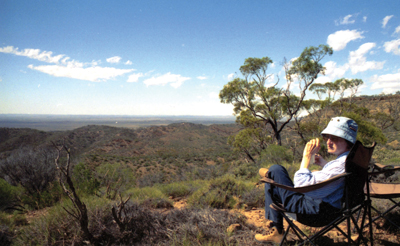
“By promoting waterjetting, the Advisory Council sponsors and I are saving people from lung damage and lead poisoning, and protecting the environment,” Frenzel explains. “We change the world by promoting global standards for the industry. I had to convince competitors that competition and cooperation are not mutually exclusive if you are to build an industry.”
One of the things Frenzel finds most interesting about the waterjetting industry is the ability of companies to work together to address a problem in the industry, despite fierce competition in the market. For example, when a serious accident occurred, instead of hiding the incident, the waterjetting industry openly talked about it, taking the time to sit down and rewrite the safety standards to ensure this type of accident did not happen again. “I’ve been in other industries where they don’t talk about the accidents,” says Frenzel. “I admire the waterjetting industry for being able to respond to the need for safety.”
Frenzel admits that sometimes this openness regarding accidents and safety issues can cause some people to label waterjetting as unsafe. However, she is quick to point out this is not the case. “In the waterjetting industry, every accident, no matter how small, is a reportable accident. However, not all accidents that happen with sandblasting are reported,” she explains. “So it looks to some people that waterjetting is unsafe.”
Achievements from 2010-2014
• 2010—Headed U.S. Department of Commerce Census Crews. I had a lot of fun and saw more of San Marcos and Hayes County than I ever imagined.
• 2010 and 2011—Completed the National Shipbuilding Research Project (NSRP) “Study to Determine the Level of Salt Mitigation as related to the Accuracy of the Measurement and Cost Benefits” Unlimited distribution.
• 2011—Supplied photos and text to the NSRP Visual Guide “Recommended Guidelines for Evaluating Flash Rust (distributed by SSPC) Prepared by: NSRP, Surface Preparation and Coatings Panel (NSRP SP03).
• Summer 2011—Battled cancer.
• 2011 and 2013 WJTA Conferences—Presented a segment on Surface Preparation in “Back to Basics” Education Day.
• November 2011—Workshop Segment: Pipeline Rehabilitation, Evaluation, Rehabilitation, and Repair of Pipelines (Houston, Workshop Organizer: Sidney Taylor, Incal, Sponsored by: Tiratsoo Technical and Clarion Technical Conferences; present paper).
• 2012—Repairing Pipeline Conference in Berlin. As an invited speaker, gave a workshop segment and presentation on the difference between ISO and U.S. standards
• 2012—Taught SSPC C13 Waterjet certification course at Arizona and Florida
• 2013—Moved to Vancouver, WA
• 2013—Invited by PPG Paints to speak to their Technical Field Support Representatives
• November 2014—Invited to give a paper on “Ensuring the Success of a Project through the Optimal Selection of Coating Techniques,” at the Crude Pipeline Asset Integrity Congress 2014 sponsored by the London Business Conference Group in Houston, TX
• Summer 2014—Interesting Expert Witness case in California involving UHP WJ and cleaning off coal tar.
Charles adds that long-term effects should also be considered when studying the safety of a technique. “An important thing to recognize is that there are no lasting health effects from the waterjetting industry like there are with sandblasting,” he says. “The difference is a safety issue versus a health issue. The small particles that you can’t see have lasting effects on the lungs of the person who is doing the sandblasting. In waterjetting, it’s not a long-term health issue, but rather it’s a safety issue.”
“If you train your people well and take precautions, you can eliminate accidents,” Frenzel says. “The use of waterjetting equipment is not covered under the Occupational Safety and Health Administration (OSHA) so the WJTA-IMCA has published the orange book of Recommended Practices, and I think they are doing a very good job talking about the accidents and how to prevent them.”
As Frenzel continues to seek out excellence from within and from those around her, she also seeks to grow her influence network so that it may benefit the industry, the environment, and the people she hopes to protect. “I just don’t understand why some people are still using abrasive cleaning,” Frenzel says. “Being silent on this issue is doing a disservice to the industry. I’m going to use my Keane award to try and convince people to switch to waterjetting in more of the coating sectors.”
General Audience Book Publications
(L.C. Frenzel)
• A Matter for Survival (Callie Houston), Jul. 2010
• Emerald Green (Callie Houston), Jan. 2011
• Sweet and Sour (Callie Houston), Aug. 2011
• Governor Lydia, A Mellow Rose from Texas, Nov. 2011—autobiography of Rotary travel years
• The Orange Cat (Lunaria), Jan. 2013
• The Sword of Training (Lunaria), Jan. 2013
• The Forgotten Garden (Lunaria), Jan. 2013
• Claire and Pem (Lunaria), Dec. 2013
• Rissa and Turlo (Lunaria), Aug. 2014
• Twin Scepters (Lunaria), Jan. 2015
• Gates of Kamoria (Lunaria), scheduled release June 2015




